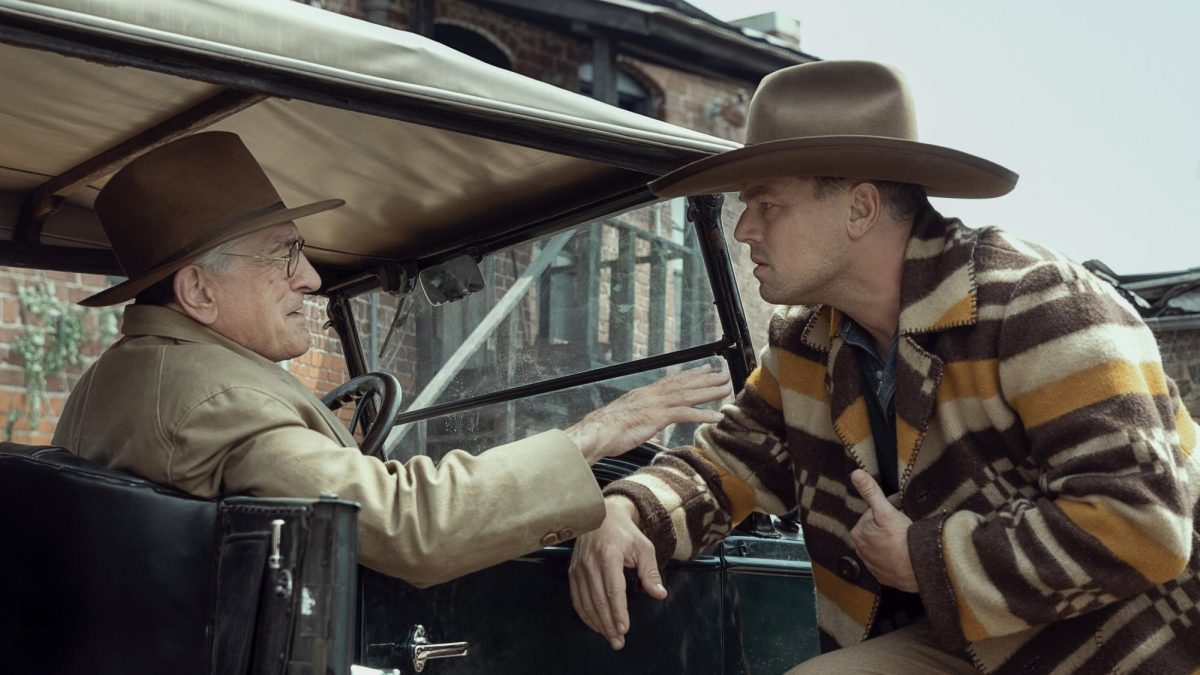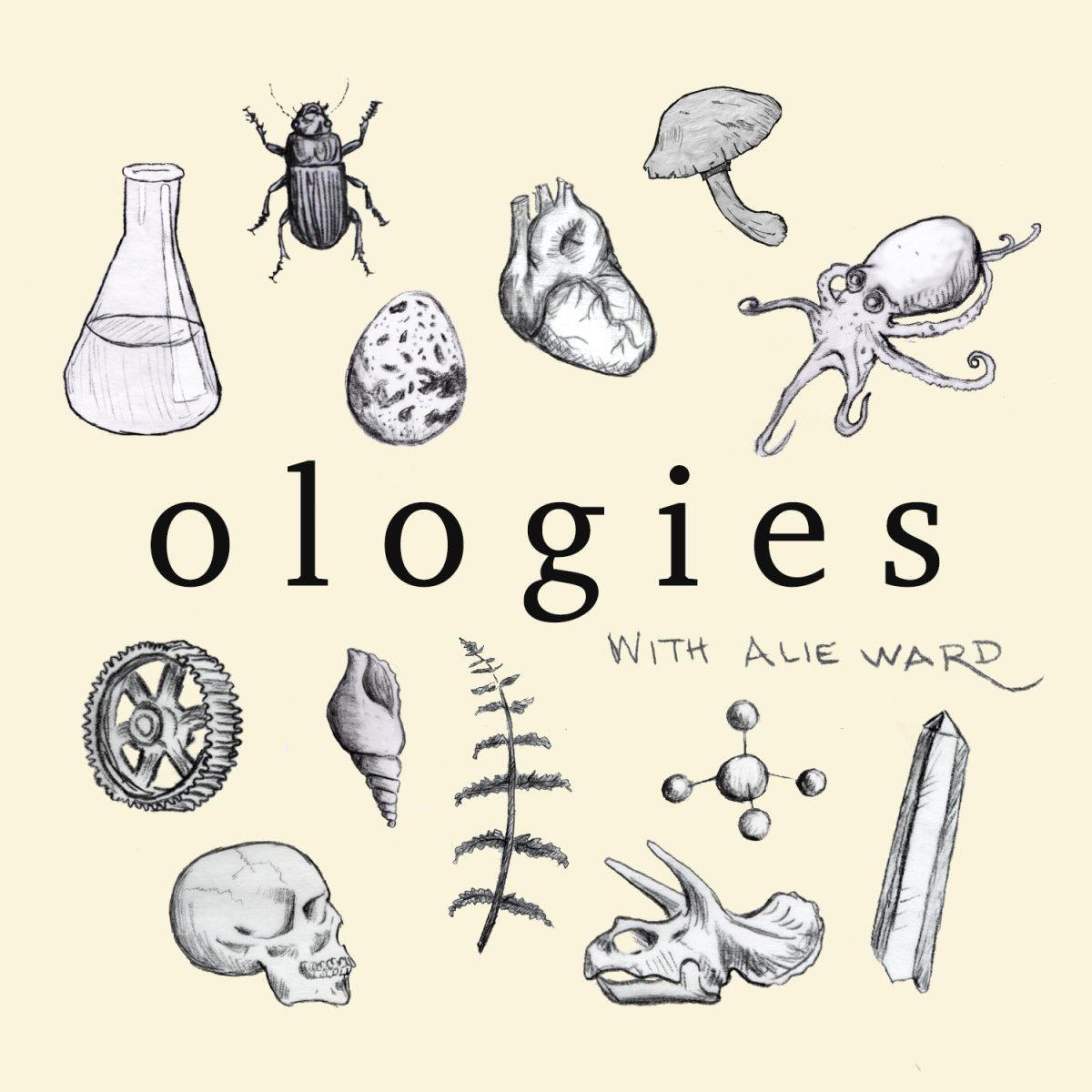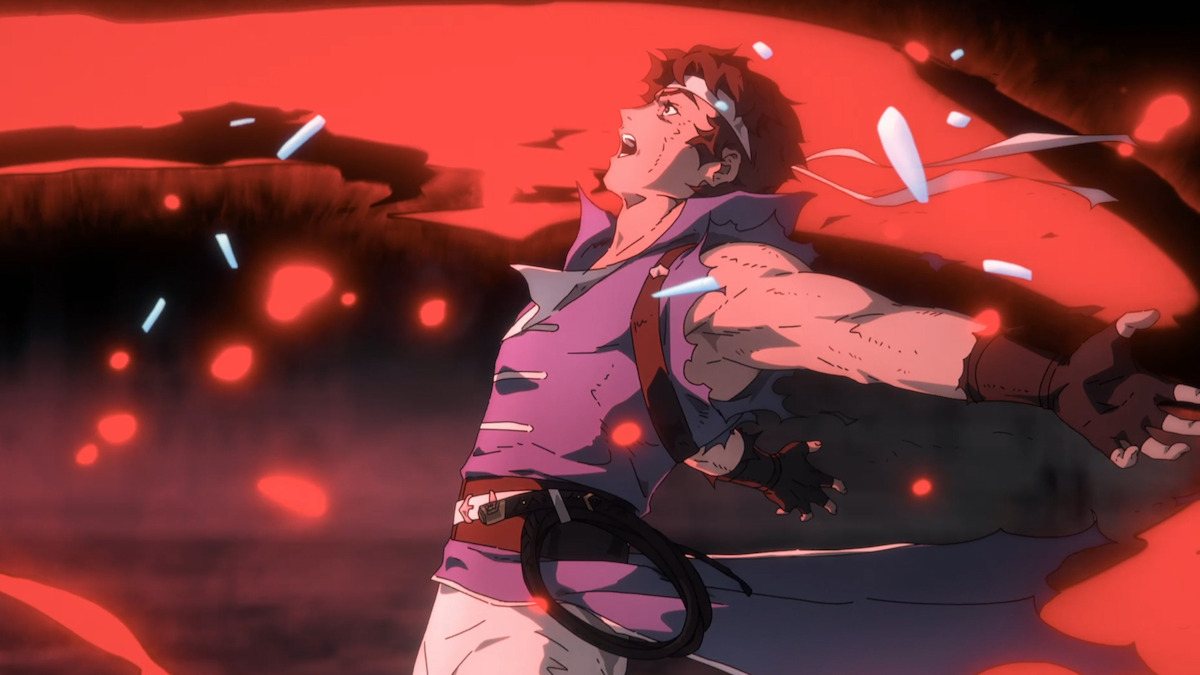“Killers of the Flower Moon,” the new picture from Martin Scorsese, is a masterpiece. That descriptor is often overused, but it’s the only term that encompasses the massive, devastating impact of Scorsese’s latest.
The film, based on David Grann’s nonfiction book of the same name, documents a series of racially and politically motivated murders committed against the Osage Native Americans in the 1920s. Scorsese and his crew worked closely with the modern-day Osage Nation, ensuring historical accuracy and respect for the tribe’s traditions and culture.
Grann’s book foregrounds Tom White, the FBI agent who investigated the crimes, portrayed on screen by Jesse Plemons. Scorsese, on the other hand, focuses on Leonardo DiCaprio’s character, Ernest Burkhart, a gullible World War I veteran who becomes involved in the murder plot at the insistence of his uncle, William Hale, who long-time actor Robert De Niro plays.
While Grann’s “Killers of the Flower Moon” is a mystery, Scorsese’s is a tragedy. He abandons any pretense of mystery early in the film, bluntly dramatizing the murders with no obfuscation of motives or perpetrators. Scorsese wants the audience to sit uncomfortably with our knowledge for three and a half hours, worn down by the callous evil of Hale and his associates.
“Killers of the Flower Moon” exemplifies two of Scorsese’s main preoccupations as an artist. The first is a complicated relationship with America and its history: he sets the stage for the film by clearly telegraphing the inherent exploitation in the United States government’s treatment of indigenous people. He also draws parallels between the Osage murders and the Tulsa race riots, and foregrounds the callous economic motivations that underscore Hale’s crimes.
Hale’s plot centers around the Osage’s land rights — massive quantities of oil were discovered underneath the Osage reservation in the early 1920s, and Hale aims to acquire the tribe’s land rights through complex political maneuvering.
The second of those preoccupations is Scorsese’s immense empathy for the people in his films. Ernest, a relatively minor figure in the book, is given immense depth and nuance. DiCaprio toes the line between naivete and malice, playing Ernest as gullible and avaricious but also somehow well-meaning. He expresses what he believes to be genuine love for his wife, Mollie, played by Lily Gladstone, even as he helps murder her entire family.
Gladstone’s performance is a massive achievement. Mollie’s deteriorating health and mounting anguish mirror the escalating devastation wrought upon the Osage, and Gladstone acts as the emotional center of the film. Her performance easily could have been histrionic and over-the-top, but she is remarkably restrained. Her quiet stillness makes the few times that she lets out her rage even more impactful — her screams shatter the ominous silences that pervade much of the film, relieving some of the agonizing tension and dread that builds up as more Osage are killed.
While Hale’s plan ultimately fails in the film as it did in real life, Scorsese repeatedly emphasizes that the plot’s technical failure is irrelevant. While he may have failed to secure the wealth he desired, William Hale succeeded at destroying a family.
At the end of the movie, Scorsese himself appears on screen and reads a list of facts about the aftermath of the murders. Hale and Ernest Burkhart were both paroled. Mollie died in 1937. After noting that her estate went to her children, Scorsese looks directly into the camera and solemnly reads the entire text of her obituary. “There was,” he concludes, “no mention of the murders.”
Scorsese’s “Killers of the Flower Moon” is not, as the book was, a story about the early FBI’s successful solving of a murder case. It is a film about the despicable systemic forces that let those murders happen and let their perpetrators walk free as the crimes themselves were forgotten.
It is a film about America. It is a film about the humanity of the oppressed. It is a film about love and about hate. It is a masterpiece in the true, staggering sense of the word.







Sheila Smidt • Nov 3, 2023 at 3:28 pm
I totally agree. It portrays the suffering of the Osage people and their lack of trust in the white man.
William Hailes could manipulate them into thinking he was their saviour not destroyer.
His nephew was gullible but deep down knew he was doing wrong.
His brother Byron seems to slip through the net of evil.